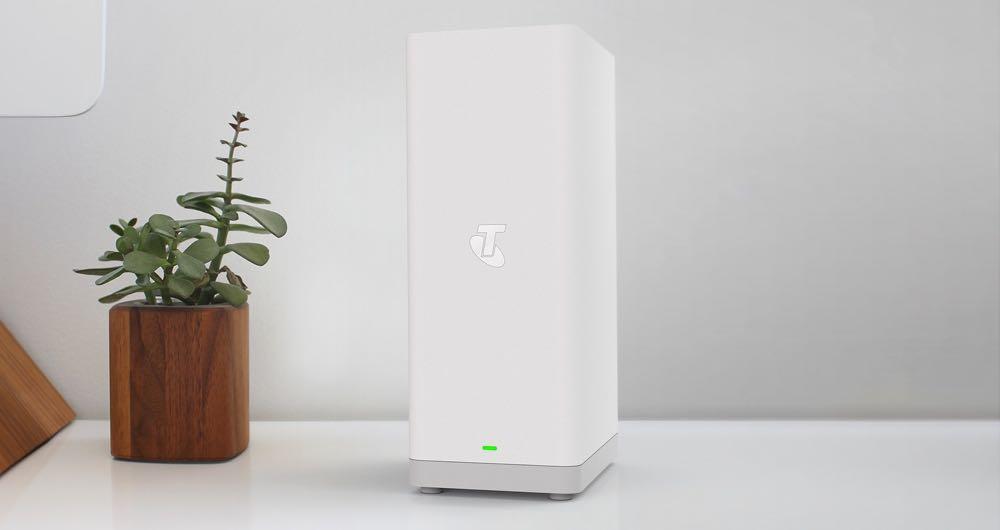Telstra customers can keep using both their home phone and internet during fixed-line broadband outages, as the telco unveils its next generation modem. The Smart Modem Gen 2 will use Telstra’s 4G mobile network to supply internet and phone calls in the event of an outage, at no extra cost.
The new Telstra Smart Modem Gen 2 automatically diverts phone and internet landline services to Telstra’s 4G mobile network within 30 seconds of a fixed-lined home broadband outage.
While voice calls in progress are disrupted, once the internet connection switches across to 4G customers can resume making and receive calls using their home phone number and handset. The modem still requires a battery backup if customers wish to use their home phone and internet during a power outage.
Customers do not pay extra for the mobile data used during a fixed-line outage, although speeds are capped at 6 Mbps down and 1 Mbps up. Meanwhile, voice calls are charged at standard home phone rates.
Whilst running over mobile broadband, home phone calls take advantage of the mobile Voice over LTE standard, using Quality of Service to reserve bandwidth for voice. This ensures that call quality does not suffer when the internet is in use.
Available to NBN, DSL and cable customers, the new Gen 2 modem goes on sale today. Of the 600,000 existing Telstra Smart Modems with 4G broadband fallback, Gen 1.1 devices (but not Gen 1.0) are set to receive voice fallback via a firmware upgrade next year. While broadband fallback works for all customers, voice fallback is only available to those on the NBN.
Both Telstra and Vodafone released 4G fallback modems in 2017, taking advantage of their mobile networks to ensure customers were not trapped in limbo during broadband outages or NBN connection delays.
The move helps the telcos meet their obligation to provide an “interim” broadband service to customers during NBN connection delays, if the telco is unable to reconnect homes to their previous “legacy” broadband connection while they await NBN repairs.
The Australian Communications and Media Authority introduced new rules at the end of last year to end the NBN blame game and break the Cease Sale deadlock which had left some Australians without home phone or internet services for months.

Most Telstra broadband services provide a home phone line whether customers want one or not. Despite the decline in home phone usage, each day three million calls are made and received by Telstra customers; 40 per cent of which are outgoing calls, says Telstra head of innovation Michele Garra.
The 4G fallback features are not only designed to work during fixed-line outages, they also allow new customers to start using their NBN modem immediately while they wait for their new service to be connected.
“You can walk out the Telstra store with a box under your arm, take it home, plug it in and you are effectively working from that moment. We describe it as ‘walk out working’,” Garra says.
The introduction of broadband fallback has reduced customer complaints significantly, she says, with 50 per cent fewer support calls and 62 per cent fewer callouts in some instances. The new Gen 2.0 modem also adds advanced broadband and home Wi-Fi diagnostic tools to help Telstra troubleshoot issues remotely.
If customers discover their Telstra mobile coverage isn’t strong enough to support 4G fallback, they can cancel their NBN service within 30 days without penalty as part of the Telstra’s NBN Satisfaction Guarantee launched in March.
While 4G voice and broadband fallback is good news for customers concerned about NBN outages, it could be bad news for competition as the mobile network owners grab an even larger share of fixed-line NBN customers, says Finder.com.au telecommunications analyst Alex Kidman.
Telstra’s latest move also puts more pressure on Optus to add mobile fallback to its broadband modems, Kidman says. While landline usage is dropping, offering voice fallback is a smart way for the largest telcos to leverage their mobile networks without taking much of a toll on network performance.
“Having a landline for emergency purposes is one of those peace of mind issues for some people,” Kidman says. “The idea of voice 4G fallback will help some people get past that fear of home phone outages now their phone relies on the internet.
“The mobile network owners like Telstra can practically offer mobile fallback for free but, if you’re one of the smaller NBN providers which doesn’t have its own mobile network, it’s going to be hard to match this kind of fallback service because you’ll need to do an expensive backend mobile data deal which could drive up your prices.”








